Same-set isolation series capitalizes on mismatches
Exploiting match-ups is an extremely important component of any successful offense. One way our team takes advantage of matchups is through an isolation series of plays designed to get the ball in the hands of the player with the most favorable match-up.
These isolation plays are run for the wing, post and point guard positions.
The following isolation set plays all start from the same formation and are easy to learn. One of the main advantages of these plays is that you can determine who gets the shot. Second, you can choose to attack players who are in foul trouble, are poor defenders or try to “hide” defensively.Isolation for post
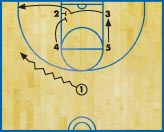
DIAGRAM 1: Post isolation (A). 1 performs a dribble entry to begin the play. 4 and 2 set a double-screen for 3, who pops to the corner.
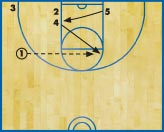
DIAGRAM 2: Post isolation (B). 4 flashes to the opposite elbow, and 5 flashes to the mid-post. 4 receives the pass from 1.
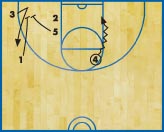
DIAGRAM 3. Post isolation (C). 5 and 1 set staggered screens for 3 drawing away from the help defenders as 4 drives to the basket.
Isolation for wing

DIAGRAM 4: Wing isolation (A). This isolation play is arranged in the same way as for the post, except 2 flashes to receive the pass.
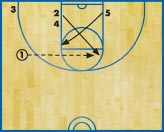
DIAGRAM 5: Wing isolation (B). 2 flashes to the opposite elbow, and 5 flashes to the mid-post. 2 receives the pass from 1.

DIAGRAM 6: Wing isolation (C). 5 and 1 set staggered screens for 3 at the corner, again drawing away the help defense as 2 drives to the basket.
Isolation for point guard
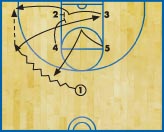
DIAGRAM 7: Point guard isolation (A). Run out of the same isolation formation as for the post and wing. After passing to 3 in the corner, 1 is sent through and underneath to the opposite low post.
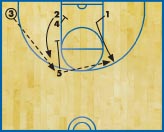
DIAGRAM 8: Point guard isolation (B). 1 fakes and releases to the free-throw-line-extended area. 5 passes to 1 and then completes the second half of the staggered screen for 2. Cleared out 1 can shoot or drive.









